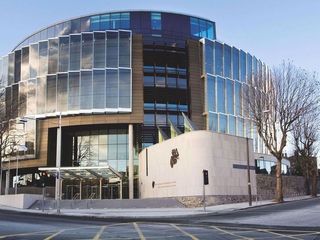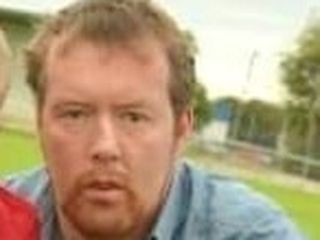- Home >
- Crime >
- Irish Crime
Every city and town in the country has coke on demand for an insatiable Irish appetite
In her new book, Cocaine Cowboys, Nicola Tallant details Ireland’s love affair with the deadly drug
The football came over the wall first as if casing the derelict yard. It was followed with a thud as its teenage owner landed on the broken concrete ground.
It was 5.02pm and the September evening sun was shining at the picturesque Dunlo Harbour of Ballinasloe, a large town outside Galway. The harbour area was once just a small outpost consisting of a harbourmaster’s house and two stores.
In the years since the turn of the century, expansion had seen it become more populated with modern duplexes, terraced homes and apartments, often marketed as perfect residences for first time buyers.
But there were still some disused yards that had fallen between the cracks of progress and remained empty and abandoned, like the one the teenager had followed his ball into.
Nicola Tallant's new book
To the casual observer it was an everyday scene of bored after-school mischief. But the only ones there to witness it were far from casual. The drug squad detectives watched as the boy took some latex gloves from his pocket and headed towards a school lunch box. As he unpacked its contents of six sandwich bags containing white powder they sprung from the shadows.
Almost two years later, members of the public would be asked to leave the courtroom due to the young age of the offender whose case was about to be heard in front of Justice Brian O’Callaghan at Galway Circuit Court.
The accused, now aged 17, sat flanked by both his parents. The teenager had no previous convictions. He wanted to become a teacher, the court heard. He was an avid GAA player and loved soccer too. The average kid next door.
He told the court he was pleading guilty to the charge of possession with intent to supply cocaine valued at more than €44,000 at the disused harbour yard on that Sunday evening in September 2021.
The cocaine had been packed into the lunchbox in six sandwich bags and ready for sale. Lab tests following the youngster’s arrest would show he had 620.7 grams to offer among his local community.
Armed Naval and Garda personnel with the half a billion euro of cocaine which was seized from a yacht off the west coast of Ireland
At the in-camera hearing, counsel for the teenager parroted a line that has now become familiar in provincial, rural and city courtrooms around the country; the boy took full responsibility for the drugs, saying that he had mixed with a bad crowd and had since turned his life around.
He had wound up in the yard with a large quantity of cocaine, the court was told, because he had taken responsibility for a debt that friends had accrued.
The boy’s age was on his side. A custodial sentence for the Section 15 offence carried a mandatory minimum 10-year prison sentence, but because the defendant was under the age of 18 he was in luck and was handed down 120 hours community service.
Twenty years ago, when drugs like cocaine were only available in Dublin and a handful of large urban centres in Ireland, the idea of a schoolboy peddling coke around a provincial Irish town would have caused a sensation.
The remarkable thing is now how unremarkable it has become for an Irish teen to become a small link in a globalised chain of money, misery and murder.
Since it first started tumbling in on the shores of West Cork in the 1990s and in the stomachs of drug mules travelling from Miami, cocaine has become the drug of the nation. It has swept in like a blizzard to dust every corner of every small town, from Donegal to Wexford and Kerry to Louth.
While a line of cocaine may have once been the stuff of movies to rural Ireland dwellers, it is now a central part of every night out, every occasion, from communions and christenings to weddings and local sporting celebrations.
The seizure of 8.8 tons of cocaine from drug-traffickers is the largest domestic drug bust in the Colombia's history
It is available to order just like a pizza on social media sites like WhatsApp, Snapchat and TikTok. So swift and total has been the spread and availability that Ireland is now one of Europe’s most prolific users of the drug.
One in every 40 of us admit to having snorted it in the past year, according to the United Nations. Unlike other drugs, cocaine respects no social boundaries.
Farmers, GAA players, first time users in their 50s and even pensioners are presenting more and more for treatment.
Professor Colin O’Gara, consultant psychiatrist and the clinical lead of addiction services at St John of God Hospital, says it is now a ‘public health emergency’ the scale of which needs to be recognised by the Government.
But to unravel how a small island on the edge of Europe ended up such a big player in the major cocaine leagues, we must follow the white supply lines back to the beginning.
And we must also follow the money. Each bag that passes from dealer to user in clubs and pubs across the country is completing an incredible journey from farm to nose, a journey that relies on grinding poverty, greed and corruption in order to reach its final destination on the tabletops and toilet cisterns of every county in Ireland.
Every step of the way, cocaine multiplies in value at a rate that puts every other commercial trading activity in the shade. It is the ultimate capitalist product, siphoning money at every link back up the chain to a mega-wealthy few who sit at the top of a ferocious and violent underworld economy.
The bloodied trail starts high in the Columbian hills where impoverished farmers and casual labourers pick millions of leaves of the coca plant and haul their product to dangerous jungle labs.
In neighbouring Peru and Bolivia, similar production lines are also in place. The product’s route to markets like Ireland will be a long and treacherous one. But also extremely valuable. By the time cocaine hits our streets its value will have multiplied almost 500 times. The profit margins of narco-economics are what makes people kill for it.
This is the 120-kilo haul was seized by gardai in Co Westmeath
A workforce in the Andes mountain range, which extends along the western edge of South America, will be paid just over a dollar for each of the 125 kilos needed to produce one kilo of cocaine.
By the time it reaches our shores it can fetch €70,000. In the labs, poor workers earning a few dollars a day crush the leaves and douse them with chemicals including diesel oil, caustic soda and cement.
Through a series of processes they turn it into a white paste, a kilo of which when refined further into powder will now be worth between $1,500 and $7,000. By other calculations the price of production is much higher.
At one point at the height of the Colombia drug wars it was estimated that each kilo processed, shipped and distributed cost six human lives.
The 2023 Global Report from the UN’s Office on Drugs and Crime shows that Irish people are among the top cocaine users in Europe, with just the Netherlands and Spain outstripping our love for the white powder.
But those at the end of the incredible transcontinental production line refuse to join the dots from their weekend party fuel to the feuds and the murders and the bodies slumped in cars in suburban driveways.
Despite the warnings and headlines and the cost of policing, the demand for cocaine keeps on growing.


















































